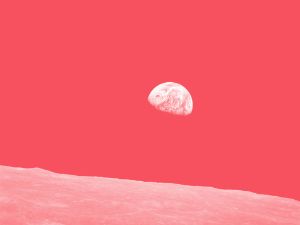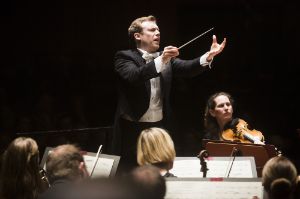Concert | Visiting orchestras / Gustav Mahler
Swedish Radio Symphony Orchestra
Visiting: Stockholm

Earthrise seen from the moon, taken by Apollo 8, Christmas 1968 © Wikimedia Commons
Dance and song – with the titles they selected for their works, Gustav Mahler and Harrison Birtwistle opted for two very different possibilities to describe the Earth. And yet there is a multitude of by no means coincidental ties between both pieces, which in reality are neither dances nor simple songs. Birtwistle divided the orchestration of his probably most successful piece to date into six independent layers, similar to the way geological formations are simultaneously related to one another. In six distinct orchestra songs, Mahler set Hans Bethge’s adaptations of Chinese lyrics to music – in order to create a new whole with all parts related to one another: his final symphony. The amply orchestrated gigantic scores are among the most exciting challenges for conductors. “They are famed for being the most difficult work that has ever been written for a symphonic orchestra” said British-born Daniel Harding about the Earth Dances of his fellow countryman Harrison Birtwistle. “Do you have any idea how to conduct it?” Mahler demanded of the conductor assigned to premiere his new symphony. And added jokingly: “I certainly don’t.”
Sir Harrison Birtwistle [*1934]
Earth Dances for orchestra [1985/86]
Gustav Mahler [1860–1911]
Das Lied von der Erde [1908]
1. Das Trinklied vom Jammer der Erde.
2. Der Einsame im Herbst.
3. Von der Jugend.
4. Von der Schönheit.
5. Der Trunkene im Frühling.
6. Der Abschied.
Anna Larsson alto
Michael Schade tenor

Daniel Harding
© Mattias Ahlm / Sveriges Radio
A Berliner Festspiele / Musikfest Berlin event